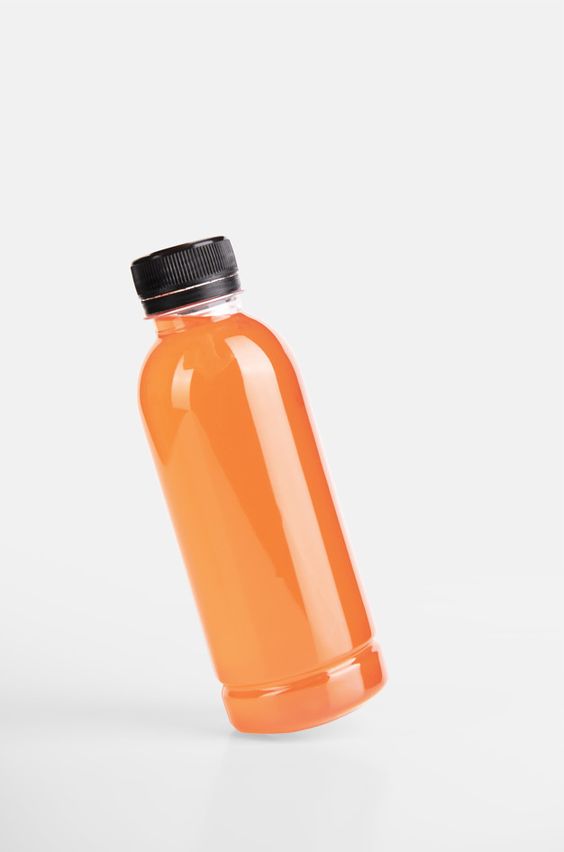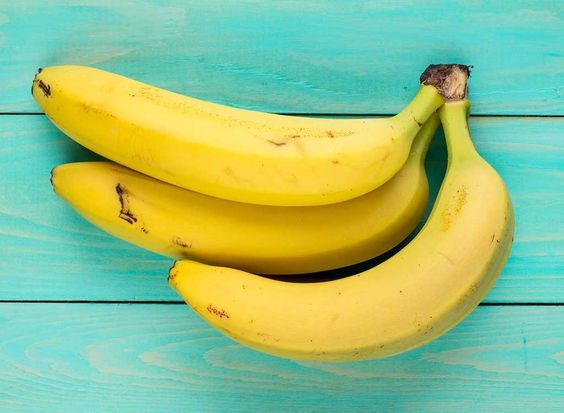This handy Spectrum Math Grade 7 Answer Key Chapter 2 Lesson 2.9 Problem Solving provides detailed answers for the workbook questions.
Spectrum Math Grade 7 Chapter 2 Lesson 2.9 Problem Solving Answers Key
Solve each problem. Write each answer in simplest form.
Question 1.
David worked 7\(\frac{1}{3}\) hours today and planted 11 trees. It takes him about the same amount of time to plant each tree. How long did it take him to plant each tree?
It took him _____________ hour to plant each tree.
Answer: \(\frac{2}{3}\)
Number of trees planted by David = 11
Number of hours worked by David to plant 11 trees = 7\(\frac{1}{3}\) hours
Convert the above numbers in improper fractions to make calculations easy.
7\(\frac{1}{3}\) = \(\frac{22}{3}\)
It takes him about the same amount of time to plant each tree.
Let time taken to plan 1 tree be x
then, time taken to plan 1 ×11 tree = 11 ×x
But, given that total time taken is \(\frac{22}{3}\) hours
thus,11x = 22/3 hours
x = \(\frac{22}{3 × 11}\) = \(\frac{2}{3}\)
Thus, it took \(\frac{2}{3}\) hours to plant each tree.
As 1 hour has 60 minutes
Time taken in minutes to plant 1 tree = \(\frac{2}{3}\) × 60 mins = 40 mins
So, It took him \(\frac{2}{3}\) hour to plant each tree.
Question 2.
A car uses 3\(\frac{1}{8}\) gallons of gasoline per hour when driving on the highway. How many gallons will it use after 4\(\frac{2}{3}\) hours?
It will use ____ gallons.
Answer: 14\(\frac{7}{12}\)
A car uses 3\(\frac{1}{8}\) gallons of gasoline per hour when driving on the highway.
The trip is for 4\(\frac{2}{3}\) hours
Gallons per trip = Gallons per hour × hours per trip
So, 3\(\frac{1}{8}\) × 4\(\frac{2}{3}\)
Convert the above numbers in improper fractions to make calculations easy.
= \(\frac{25}{8}\) × \(\frac{14}{3}\)
Reduce the above fractions into simplest form if possible. In this case, it is possible.
Then, multiply the numerators and denominators separately.
= \(\frac{25 × 14}{8 × 3}\)
Divide the 14 in numerator and 8 in denominator by 2, which is a common factor.
= \(\frac{25 × 7}{4 × 3}\)
= \(\frac{175}{12}\)
= 14\(\frac{7}{12}\)
It will use 14\(\frac{7}{12}\) gallons.
Question 3.
A board was 24\(\frac{3}{8}\) inches long. A worker cut it into pieces that were 4\(\frac{7}{8}\) inches long. The worker cut the board into how many pieces?
The worker cut the board into ____ pieces.
Answer: 5 pieces
A board was 24\(\frac{3}{8}\) inches long.
A worker cut it into pieces that were 4\(\frac{7}{8}\) inches long.
Number of pieces the worker cut the board = 24\(\frac{3}{8}\) ÷ 4\(\frac{7}{8}\)
Convert the above numbers in improper fractions to make calculations easy.
= \(\frac{195}{8}\) ÷ \(\frac{39}{8}\)
To divide by a fraction, multiply by its reciprocal.
Here, the reciprocal of \(\frac{39}{8}\) is \(\frac{8}{39}\)
So, \(\frac{195}{8}\) × \(\frac{8}{39}\)
Reduce the above fractions into simplest form if possible. In this case, it is possible.
Then, multiply the numerators and denominators separately.
= \(\frac{195 × 8}{8 × 39}\)
Divide the 8 in numerator and 8 in denominator by 8, which is a common factor.
= \(\frac{195 × 1}{1 × 39}\)
now, Divide the 195 in numerator and 39 in denominator by 5, which is a common factor.
= \(\frac{5 × 1}{1 × 1}\)
= \(\frac{5}{1}\)
= 5
The worker cut the board into 5 pieces.
Question 4.
Susan must pour 6\(\frac{1}{2}\) bottles of juice into 26 drink glasses for her party. If each glass gets the same amount of juicer, what fraction of a bottle will each glass hold?

Each glass will hold ___________ bottles.
Answer: \(\frac{1}{4}\)
Susan must pour 6\(\frac{1}{2}\) bottles of juice into 26 drink glasses for her party.
6\(\frac{1}{2}\) can be converted into improper fraction, which is \(\frac{13}{2}\)
The capacity of each glass = 6\(\frac{1}{2}\) ÷ 26
= \(\frac{13}{2}\) ÷ 26
To divide by a fraction, multiply by its reciprocal.
Here, the reciprocal of \(\frac{26}{1}\) = \(\frac{1}{26}\)
= \(\frac{13}{2}\) × \(\frac{1}{26}\)
Reduce the above fractions into simplest form if possible. In this case, it is possible.
Then, multiply the numerators and denominators separately.
= \(\frac{13 × 1}{2 × 26}\)
Divide the 13 in numerator and 26 in denominator by 13, which is a common factor.
= \(\frac{1 × 1}{1 × 2}\)
= \(\frac{1}{4}\)
Therefore, Each glass will hold \(\frac{1}{4}\) bottles.
Question 5.
The standard size of a certain bin holds 2\(\frac{2}{3}\) gallons. The large size of that bin is 1\(\frac{1}{4}\) if times larger. How many gallons does the large bin hold?
The large bin holds ____ gallons.
Answer: \(\frac{10}{3}\)=3\(\frac{1}{3}\)
The standard size of a certain bin holds 2\(\frac{2}{3}\) gallons. The large size of that bin is 1\(\frac{1}{4}\) if times larger.
The capacity of large bin = 2\(\frac{2}{3}\) × 1\(\frac{1}{4}\)
Convert the above numbers in improper fractions to make calculations easy.
= \(\frac{8}{3}\) × \(\frac{5}{4}\)
Reduce the above fractions into simplest form if possible. In this case, it is possible.
Then, multiply the numerators and denominators separately.
= \(\frac{8 × 5}{3 × 4}\)
Divide the 8 in numerator and 4 in denominator by 4, which is a common factor.
= \(\frac{2 × 5}{3 × 1}\)
= \(\frac{10}{3}\)
=3\(\frac{1}{3}\)
The large bin holds \(\frac{10}{3}\)=3\(\frac{1}{3}\) gallons.
Question 6.
Diana has 3\(\frac{1}{4}\) bags of nuts. Each bag holds 4\(\frac{1}{2}\) pounds. How many pounds of nuts does Diana have?
Diana has ____ pounds of nuts.
Answer: \(\frac{117}{8}\) = 14\(\frac{5}{8}\)
Diana has 3\(\frac{1}{4}\) bags of nuts.
Each bag holds × pounds.
Total number of pounds of nuts Diana has = 3\(\frac{1}{4}\) × 4\(\frac{1}{2}\)
Convert the above numbers in improper fractions to make calculations easy.
= \(\frac{13}{4}\) × \(\frac{9}{2}\)
Reduce the above fractions into simplest form if possible. In this case, it is not possible.
Then, multiply the numerators and denominators separately.
= \(\frac{13 × 9}{4 × 2}\)
= \(\frac{117}{8}\)
= 14\(\frac{5}{8}\)
Therefore, Diana has 14\(\frac{5}{8}\) pounds of nuts.
Question 7.
There is a stack of 7 crates. Each crate is 10\(\frac{2}{3}\) inches high. How many inches high is the stack of crates?
The stack of crates is ___________ inches high.
Answer: 74\(\frac{2}{3}\)
There is a stack of 7 crates. Each crate is 10\(\frac{2}{3}\) inches high.
The number of inches high is the stack of crates = 7 × 10\(\frac{2}{3}\)
Convert the above numbers in improper fractions to make calculations easy.
= \(\frac{7}{1}\) × \(\frac{32}{3}\)
Reduce the above fractions into simplest form if possible. In this case, it is not possible.
Then, multiply the numerators and denominators separately.
= \(\frac{7 × 32}{1 × 3}\)
= \(\frac{224}{3}\)
= 74\(\frac{2}{3}\)
The stack of crates is 74\(\frac{2}{3}\) inches high.
Solve each problem. Write each answer in simplest form.
Question 1.
Each month, Kelsey donates \(\frac{1}{5}\) of her allowance to her school for supplies. \(\frac{1}{2}\) of that amount goes to the chorus class. How much of her allowance goes to supplies for the chorus class?
____________ of her allowance goes to help the chorus classes.
Answer: \(\frac{1}{10}\)
Each month, Kelsey donates \(\frac{1}{5}\) of her allowance to her school for supplies. \(\frac{1}{2}\) of that amount goes to the chorus class.
The amount of her allowance that goes to supplies for the chorus class = \(\frac{1}{5}\) × \(\frac{1}{2}\)
Reduce the above fractions into simplest form if possible. In this case, it is not possible.
Then, multiply the numerators and denominators separately.
= \(\frac{1 × 1}{5 × 2}\)
= \(\frac{1}{10}\)
Therefore, \(\frac{1}{10}\) of her allowance goes to help the chorus classes.
Question 2.
Alvin cuts \(\frac{3}{4}\) of a piece of cheese. He gives \(\frac{1}{8}\) of it to Mall. How much of the cheese does Alvin give to Mall?
Alvin gives ____________ of the cheese to Mall.
Answer: \(\frac{3}{32}\)
Alvin cuts \(\frac{3}{4}\) of a piece of cheese. He gives \(\frac{1}{8}\) of it to Mall.
The amount of chees that Alvin gave to Mall = \(\frac{3}{4}\) × \(\frac{1}{8}\)
Reduce the above fractions into simplest form if possible.
Then, multiply the numerators and denominators separately.
= \(\frac{3 × 1}{4 × 8}\)
= \(\frac{3}{32}\)
Therefore, Alvin gives \(\frac{3}{32}\) of the cheese to Mall.
Question 3.
Kati has 16\(\frac{3}{4}\) hours to finish 3 school projects. How much time may she spend on each project, if she plans to spend the same amount of time on each?
Katie will spend ____________________ hours on each project.
Answer: 5\(\frac{7}{12}\)
Kati has 16\(\frac{3}{4}\) hours to finish 3 school projects.
If she plans to spend the same amount of time on each, the number of hours she spend on each project = 16\(\frac{3}{4}\) ÷ 3
Convert the above number into improper fractions to make the calculations easy.
16\(\frac{3}{4}\) ÷ 3 = \(\frac{67}{4}\) ÷ \(\frac{3}{1}\)
To divide by a fraction, multiply by its reciprocal.
Here, the reciprocal of \(\frac{3}{1}\) is \(\frac{1}{3}\)
So, \(\frac{67}{4}\) × \(\frac{1}{3}\)
Reduce the above fractions into simplest form if possible.
Then, multiply the numerators and denominators separately.
= \(\frac{67 × 1}{4 × 3}\)
= \(\frac{67}{12}\)
= 5\(\frac{7}{12}\)
Therefore, Katie will spend 5\(\frac{7}{12}\) hours on each project.
Question 4.
Martha spent $2.90 on 3\(\frac{1}{2}\) pounds of bananas. How much did she spend on each pound of bananas?

She spent ____________________ on each pound.
Answer: $0.825
Martha spent $2.90 on 3\(\frac{1}{2}\) pounds of bananas.
The amount she spent on each pound of bananas = $2.90 ÷ 3\(\frac{1}{2}\)
Converting 3\(\frac{1}{2}\) into improper fraction to make the calculations easy.
3\(\frac{1}{2}\) = \(\frac{7}{2}\)
So, $2.90 ÷ \(\frac{7}{2}\)
To divide by a fraction, multiply by its reciprocal.
Here, the reciprocal of \(\frac{7}{2}\) is \(\frac{2}{7}\)
So, $2.90× \(\frac{2}{7}\)
Reduce the above fractions into simplest form if possible.
Then, multiply the numerators and denominators separately.
= \(\frac{2.90 × 2}{7}\)
= $0.825
Therefore, She spent $0.825 on each pound.
Question 5.
Monica has 5\(\frac{1}{2}\) cups of sugar to make pies. If each pie uses cup of sugar, how many pies can Monica make?
Monica can make ____ pies.
Answer: 5
Monica has 5\(\frac{1}{2}\) cups of sugar to make pies.
If each pie uses cup of sugar, the number of pies she can make = 5\(\frac{1}{2}\) ÷ 1 = 5\(\frac{1}{2}\)
As we cannot make \(\frac{1}{2}\) pie, Monica can make 5 pies.
Question 6.
Vince has 12\(\frac{1}{2}\) hours to mow the lawn, do the laundry, make dinner, and finish his homework. How much time can Vince spend on each task, if he plans to spend the same amount of time on each?
Vince will spend ___________________ hours on éach project.
Answer: 3\(\frac{1}{8}\)
Vince has 12\(\frac{1}{2}\) hours to mow the lawn, do the laundry, make dinner, and finish his homework.
So, number of projects he has to do are 4
If he plans to spend the same amount of time on each, the number of hours he spends on each project = 12\(\frac{1}{2}\) ÷ 4
Convert the above number into improper fractions to make the calculations easy.
12\(\frac{1}{2}\) ÷ 4 = \(\frac{25}{2}\) ÷ \(\frac{4}{1}\)
To divide by a fraction, multiply by its reciprocal.
Here, the reciprocal of \(\frac{4}{1}\) is \(\frac{1}{4}\)
So, \(\frac{25}{2}\) × \(\frac{1}{4}\)
Reduce the above fractions into simplest form if possible.
Then, multiply the numerators and denominators separately.
= \(\frac{25 ×1}{2 × 4}\)
= \(\frac{25}{8}\)
= 3\(\frac{1}{8}\)
Therefore, Vince will spend 3\(\frac{1}{8}\) hours on éach project.
Question 7.
Drew spent $38.97 on 3\(\frac{1}{4}\) pounds of shrimp. How much did he spend on each pound of shrimp?
Drew spent _____ on each pound of shrimp.
Answer: $11.99
Drew spent $38.97 on 3\(\frac{1}{4}\) pounds of shrimp.
The amount Drew spent on each pound = $38.97 ÷ 3\(\frac{1}{4}\)
Converting 3\(\frac{1}{4}\) into improper fraction to make the calculations easy.
3\(\frac{1}{4}\) = \(\frac{13}{4}\)
So, $38.97 ÷ \(\frac{13}{4}\)
To divide by a fraction, multiply by its reciprocal.
Here, the reciprocal of \(\frac{13}{4}\) is \(\frac{4}{13}\)
So, $38.97× \(\frac{4}{13}\)
Reduce the above fractions into simplest form if possible.
Then, multiply the numerators and denominators separately.
= \(\frac{38.97 × 4}{13}\)
= $11.99
Therefore, Drew spent $11.99 on each pound of shrimp.
